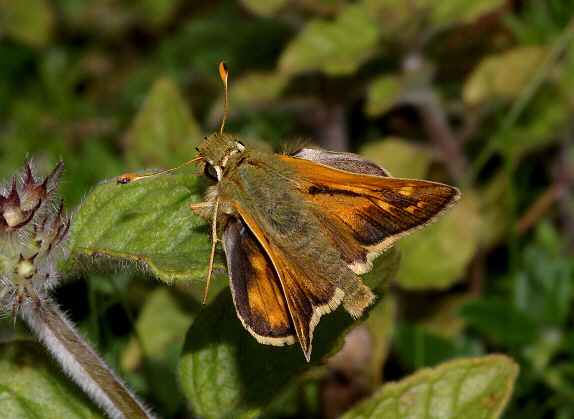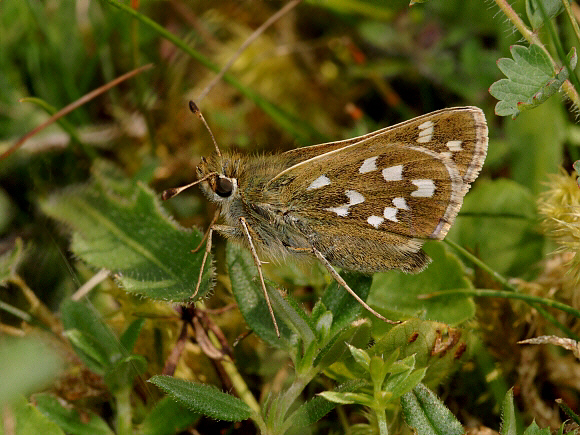
Introduction
There are 25 Hesperia species distributed variously across the temperate and subarctic regions of Europe, Asia and North America. The genus is closely allied to Polites and two genera share many common characteristics. Both for example have underside hindwings with a distinctive configuration of white spots, and the males of both genera have conspicuous black androconial on the forewings.
Hesperia comma is one of the most widely distributed skipper species in the world. It occurs in Alaska, over most of Canada, and across the western half of the USA. Beyond North America it is found across the whole of Europe, and in the Atlas mountains of north Africa. Its range extends eastward across temperate and subarctic Asia to Siberia, Amurland and China.
Habitats
This species occurs in a wide range of grassy habitats including alpine meadows, open woodlands and tundra edge grasslands.

Lifecycle
In Europe and most of North America the butterfly is univoltine, but in Alaska the lifecycle takes two years to complete, the first winter being spent as an egg and the second as a fully grown caterpillar or chrysalis.
Ovipositing females dart about close to the ground and alight randomly on short grasses. They then thrust their abdomen forward to lay a single egg on a grass blade without any investigative hopping or walking about. After ovipositing they usually rest for a few seconds while before flying to another similar nearby spot where they repeat the process.
The straw-coloured eggs are laid singly on the narrow leaf blades of grasses including Festuca, Poa, Muhlenbergia, Stipa, Andropogon, Lolium, Bromus and Bouteloua ( Poaceae ). The larvae are fully developed within the eggs by early autumn, but do not hatch until the following March. They feed nocturnally on the fine tender leaf blades, sheltering by day in a flimsy silken tent spun at the base of a grass tuft. The fully grown larva is dark green with wrinkled skin, and a black head. The pupa is dark brown with blackish wing cases. It is formed within a cocoon of coarse silk at the base of grass tufts. The butterfly develops very quickly, emerging after only about 7 days.
Adult behaviour
The adults are extremely active, zipping and darting about in every direction just above the surface of the ground. Males occupy loosely defined overlapping territories where they dart from flower to flower, stopping periodically to perch on low herbage or on a patch of bare ground. They dart up to intercept and investigate any small rapidly flying insect including flies, bees and wasps as well as other butterflies. They are very pugnacious in nature, and will chase off even the largest and most powerful butterflies. During male / male encounters, the butterflies zigzag frenetically just above the ground, and then spiral upwards in tight circles until the weaker male is ousted, whereupon the other male returns to within a few metres of it’s original position.
When a virgin female is encountered she is abruptly forced to land on the ground, usually in a tuft of grass, where she vibrates her wings rapidly. The male lands alongside her, and buzzes excitedly around her, showering her with pheromones from his androconial scales. The female then flies in a series of short hops, until she finds a comfortable spot to settle, and the male then settles by her side, curving his abdomen round until he engages her. He then slowly turns to face away from her, after which the pair remain stationary in copulation for about 2 hours.
When a gravid female is encountered the ritual begins the same way, but after settling together 3 or 4 times in succession without successfully copulating the male flies off. There does not appear to be any visual rejection signal given to the unwanted male, so presumably mating only takes place of the female is receptive to the male pheromones.
Both sexes nectar avidly at a wide variety of low growing flowers, favouring Euphrasia, Trifolium, Cirsium, Sedum, Lotus and Scabiosa.
